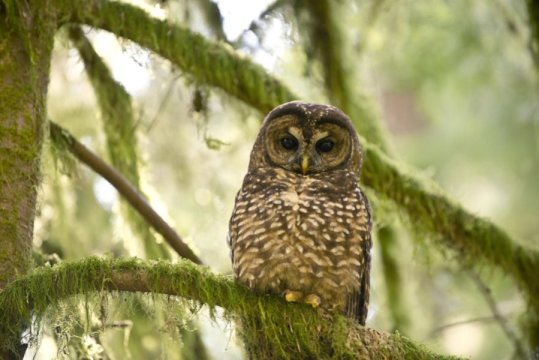[ad_1]
The Auk: Ornithological Advances presents a study on a Northern Spotted Owl pedigree, consisting of almost 14,200 individuals over 30 years, which determined inbreeding varies across the species’ range. Selection against inbreeding based on decreased future reproduction, fewer offspring, and overall survival of individuals was also supported. These results indicate that Spotted Owl conservation efforts need to address owl breeding more. Another implication of this work is the need to increase genetic diversity to prevent further population decline.
Mark Miller of the United States Geological Survey (USGS) Forest and Rangeland Ecosystem Science Center, and colleagues employed field and statistical methods to create a family tree for Northern Spotted Owls living in California, Oregon, and Washington. From this, the researchers determined how often inbreeding occurs in the wild for these birds. Fourteen types of matings among relatives were determined with most inbreeding relationships being between half or full siblings. It was discovered that inbreeding is most common in the Washington Cascades (~15% of individuals are inbred), while the lowest inbred population was Northern California (~2.7% of individuals). The explanation for this geographic variation may be the rate at which specific populations are declining and experiencing bottlenecks. Conservation efforts are vital today given that Northern Spotted Owls are already facing habitat loss and competition with a similar species, the Barred Owl. This study showed that both the physical consequences of inbreeding (physical deformities, reduced ability to adapt) and the reproductive fitness of individual birds (infertility, future reproduction, decreased survival) need to be taken into account since both influence this species’ success. Translocating birds among populations to help increase the genetic diversity may be a potential management strategy.
Lead author Mark Miller comments, “Long-term studies, similar to the one described in this paper, are key to understanding how common or rare inbreeding is in natural populations. An understanding of the extent of inbreeding can help resource managers better identify appropriate measures to conserve threatened and endangered species.”
Story Source:
Materials provided by American Ornithological Society Publications Office. Note: Content may be edited for style and length.
[ad_2]















